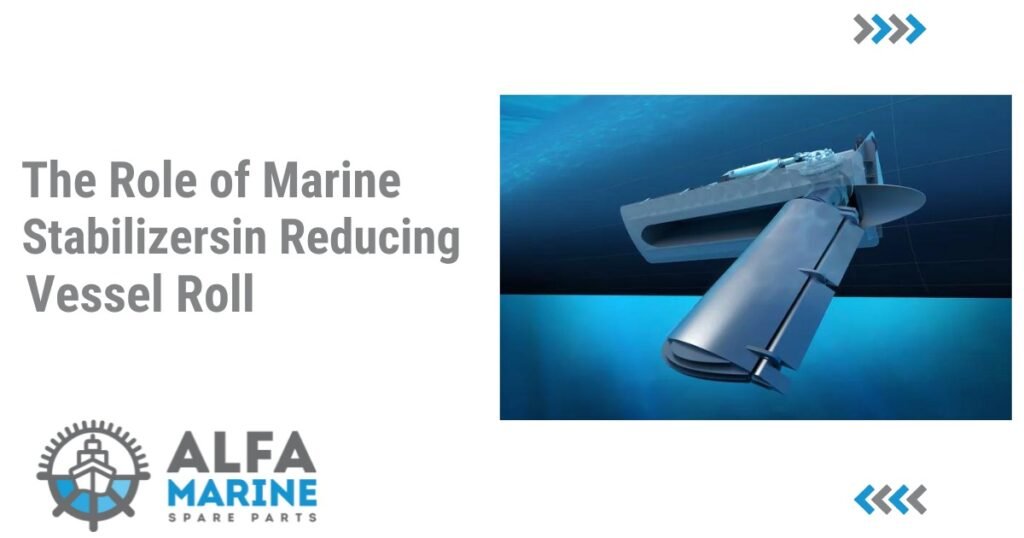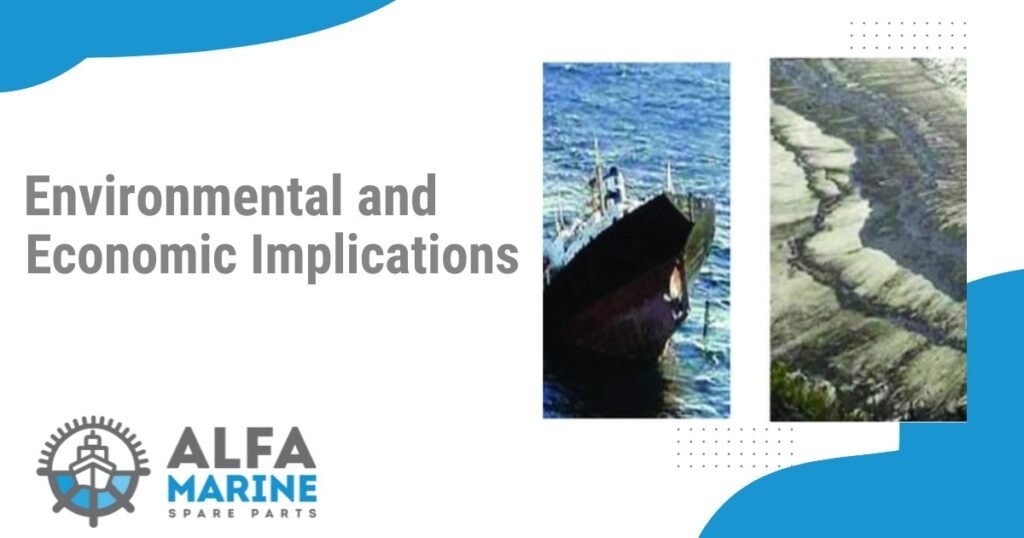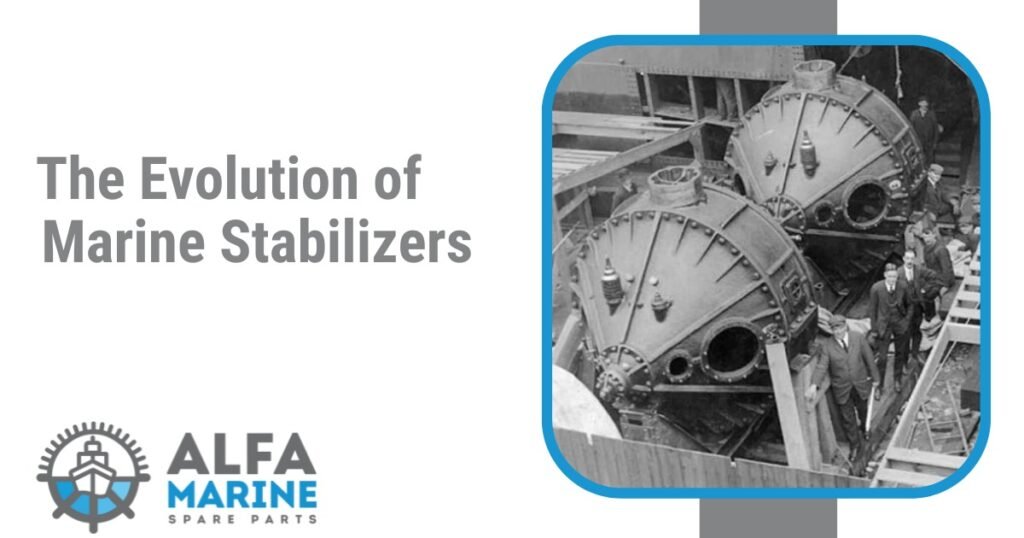Have you ever gazed out on the good-sized expanse of the sea, marveled on the may of a deliver reducing through the waves, and questioned: How do those enormous vessels maintain stability amidst the relentless movement of the sea?
The solution lies in the state-of-the-art generation of marine stabilizers. In this comprehensive article, we delve into the pivotal position performed by way of marine stabilizers, uncovering their mechanisms, packages, the transformative effect they’ve on enhancing safety and luxury at sea, and also the pivotal position of marine stabilizers, illuminating their significance in improving vessel balance and ensuring smoother voyages across the excessive seas.
What is a marine stabilizer?

Understanding Vessel Roll
Before delving into the function of marine stabilizers, it’s important to comprehend the phenomenon they combat: vessel roll. Roll refers to the facet-to-side movement experienced with the aid of ships as they navigate via the water. This movement, frequently prompted by using waves, wind, or the vessel’s own propulsion, poses sizeable demanding situations to maritime operations. Excessive roll now not only effectively jeopardizes the protection of passengers and crew but also compromises shipment balance and standard consolation.
What is the best marine fuel stabilizer?
When it comes to selecting the optimal marine fuel stabilizer, discerning boat owners and maritime professionals seek a product that offers unparalleled performance, reliability, and protection for their vessels’ engines and fuel systems.
Among the myriad options available, one standout contender consistently garners acclaim for its exceptional quality and effectiveness: Alfa Marine Spareparts Marine Fuel Stabilizer.
Crafted with precision and backed by years of research and development, Alfa Marine Spareparts Marine Fuel Stabilizer stands at the forefront of marine fuel additives, setting a new standard for fuel preservation and engine optimization.
Moreover, Alfa Marine Spareparts Marine Fuel Stabilizer’s eco-conscious design reflects a commitment to sustainability and environmental responsibility.
In conclusion, for those seeking the pinnacle of fuel stabilization technology for their marine endeavors, Alfa Marine Spareparts Marine Fuel Stabilizer emerges as the undisputed choice, embodying excellence in performance, versatility, and environmental stewardship.
The Evolution of Marine Stabilizers
The quest to mitigate vessel roll has spurred an exquisite evolution in marine stabilizer technology. The journey has been marked by relentless innovation, from rudimentary ballasts to state-of-the-art gyroscopic and fin-based stabilizers. Before embarking on their voyages, sailors diligently add marine fuel stabilizers to ensure the smooth operation of their ship’s engines throughout the voyage.
Alfa Marine Sub Particles, at the vanguard of this technological revolution, has pioneered current solutions that redefine the standards of balance at sea.
Mechanisms of Marine Stabilizers
At the coronary heart of marine stabilizers lies a diverse array of mechanisms designed to counteract vessel roll. Gyroscopic stabilizers harness the standards of angular momentum to generate stabilizing forces, efficaciously dampening roll motions.
Alternatively, fin stabilizers leverage hydrodynamic forces to produce lateral resistance, minimizing the oscillations precipitated through wave motion.
Through meticulous engineering and precision layout, Alfa Marine Sub Particles has perfected these mechanisms to supply extraordinary balance overall performance.
Applications Across the Maritime Spectrum
Marine stabilizers are indispensable across various maritime operations, from cruise liners to cargo vessels and luxury yachts.
They enhance comfort for passengers, mitigate seasickness, and protect cargo integrity while optimizing fuel efficiency by reducing roll-induced resistance.
Advancements in Stabilization Technology
As maritime industries evolve, Alfa Marine Sub Particles leads the way with innovations like dynamic fin control systems and adaptive stabilization algorithms, optimizing vessel performance in real-time.
Moreover, the mixing of predictive analytics and artificial intelligence allows proactive stabilization techniques, preempting roll-triggered disturbances before they arise.
Environmental and Economic Implications
Beyond their instantaneous benefits in terms of safety and luxury, marine stabilizers also yield massive environmental and economic blessings. Marine stabilizers reduce fuel consumption, emissions, and cargo damage, fostering sustainability and economic viability in the maritime industry.

Future Prospects and Challenges
Looking ahead, the future of marine stabilization holds immense promise, driven by ongoing technological advancements and evolving industry dynamics. Addressing challenges such as regulatory compliance and integration complexities is crucial. With Alfa Marine Sub Particles’ heritage of innovation, the maritime industry can enter an era of stability and performance.
Conclusion
Marine stabilizers stand as pillars of maritime innovation, ensuring safety and comfort amid the perpetual dance between ship and sea. Moreover, their role in enhancing balance promises smoother voyages, preserving the allure of the open sea for generations.
FAQs
How do marine stabilizers paintings?
Marine stabilizers work by generating a counteracting pressure to mitigate the rolling motion of a vessel. Moreover, Hydrodynamic fins, gyroscopic systems, and active control technologies are employed to stabilize marine vessels.
What kinds of vessels gain from marine stabilizers?
There are many vessels that can benefit from marine stabilizers, including shipships, ferries, offshore systems, and naval vessels. Moreover, any vessel operating in probably hard seas can enjoy the stepped-forward stability furnished by marine stabilizers.
Are marine stabilizers effective in all sea situations?
While marine stabilizers can significantly reduce vessel roll, their effectiveness may vary based on factors like wave height, frequency, and vessel speed. Despite reaching limits in extreme conditions, such as heavy storms, they still provide valuable stabilization in normal operating conditions.
Do marine stabilizers affect gas performance?
Stabilizers, despite a slight increase in fuel consumption, provide improved stability, reducing the need for corrective steering and minimizing cargo movement, leading to fuel efficiency and operational savings.
Are marine stabilizers a retrofit option for existing vessels?
Yes, it is possible to retrofit stabilizers to existing vessels, providing a cost-effective solution to enhance stability and enhance comfort for passengers and crews. Retrofitting generally includes installing stabilizer systems both externally or internally, relying on the vessel’s layout and structural concerns.








